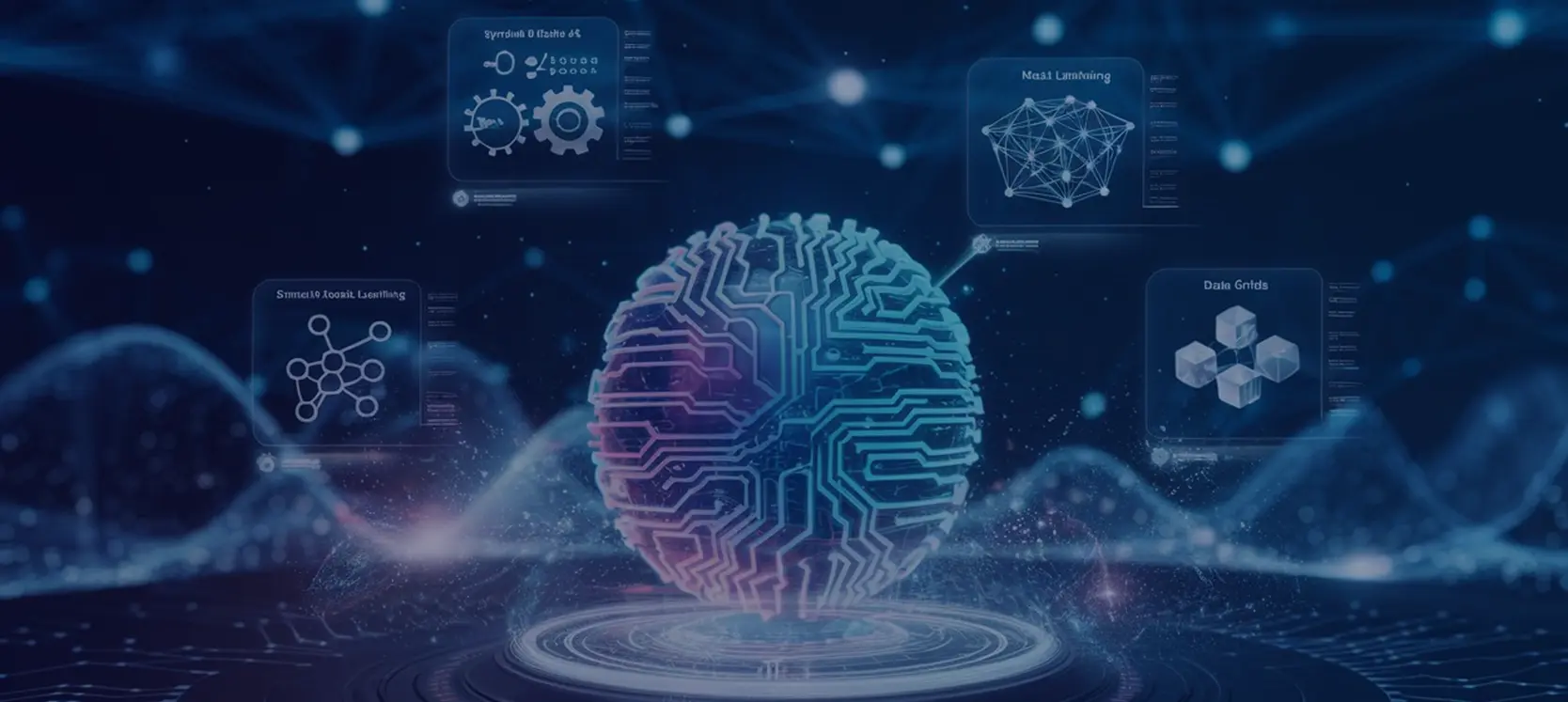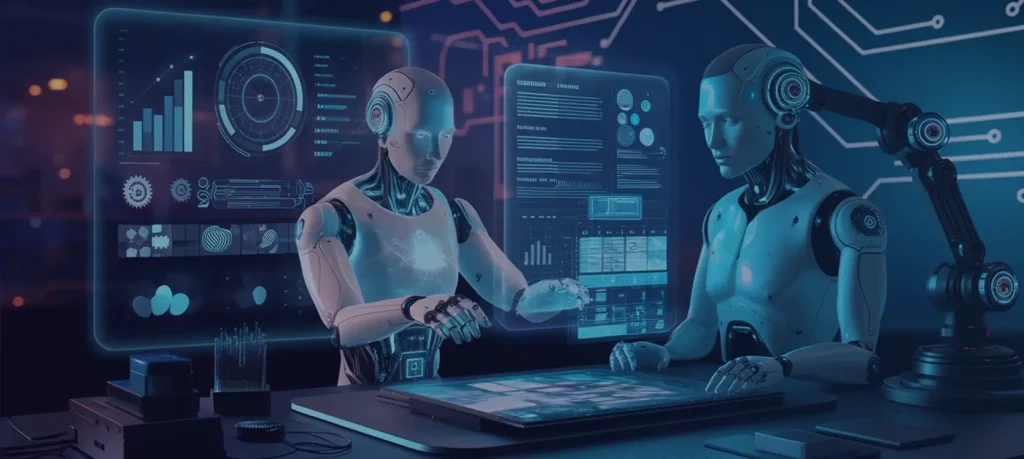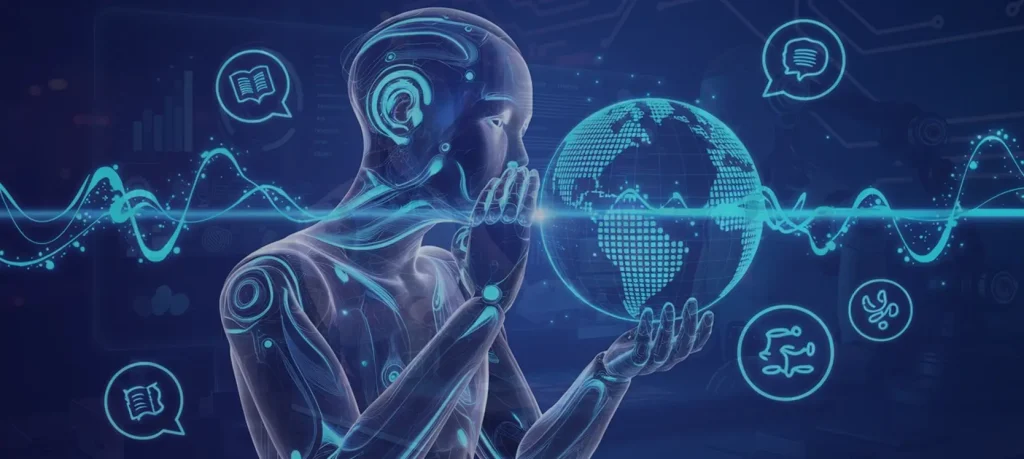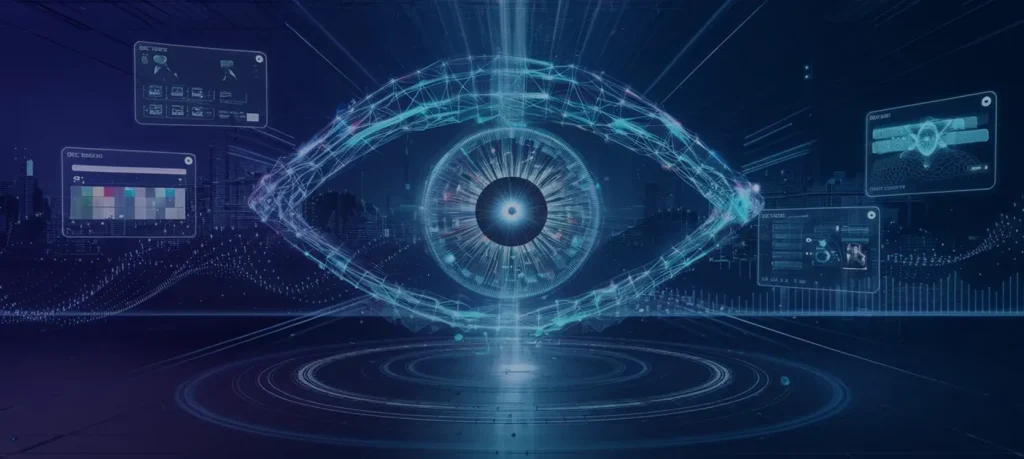
What Kind Of AI Can You Use To Automate Repetitive Tasks?
07 Jan 2025Introduction
What kind of AI can you use to automate repetitive tasks? Are you tired of drowning in spreadsheets or answering the same customer questions? 55 percent of Americans say they regularly use AI and the number will increase.
The burden of tedious tasks can prove to be too much for business founders! STOP. Have you spent money on hiring new resources and long training hours? Its time to halt those brakes, a more suitable approach is to utilize that extra energy on finding AI tools to automate repetitive tasks.
Robotic Process Automation (RPA): Your Digital Workforce

The popularity of RPA continues to soar. I know, RPA is a software technology. But, what are its characteristics? Simply put, it combines artificial intelligence and machine learning to make automating tasks a piece of cake. Well does it?
In one of my ranking articles (not bragging), I talk about the role of automation.
“Automation is any technology that reduces the need for human labor, the nature of work is similar to a regimen in most cases. Artificial intelligence mimics humans and interacts with machines so that they can think for themselves.”
Robotic Process Automation capabilities
RPA isn’t just about automating clicks; it’s about creating a symphony of digital workflows. Here are some key characteristics that define RPA, going beyond the standard definitions:
RPA bots operate within existing user interfaces. They don’t require deep system integrations or API access in most cases. These bots are quick to deploy and less disruptive to existing IT infrastructure.
RPA thrives on structured, rule-based data. Think forms, spreadsheets, and databases. While some advanced RPA tools are incorporating AI to handle semi-structured data, their core strength remains in predictable data formats. This makes them ideal for back-office operations.
RPA bots meticulously follow pre-defined rules, mimicking human actions step-by-step. This “digital mimicry” makes them highly reliable if you instantly want to automate mundane tasks. However, this also means they lack the adaptability of AI-powered solutions when faced with unexpected scenarios.
One of RPA’s biggest advantages is its ability to scale. Multiple bots can handle increased workloads during peak seasons or specific campaigns. The “elasticity” saves your cash in comparison to recruiting new staff.
Because RPA bots follow a set of instructions, every action is logged and auditable. You get a clear trail of activity, which is perfect for compliance and regulatory requirements. No doubt, transparency is a valuable asset for risk management and process improvement.
RPA deployments are typically faster and deliver quicker ROI. This makes it an attractive option for businesses looking for quick wins and demonstrable improvements in productivity.
Benefits of RPA
The worldwide RPA software market grew to $3.2 billion in 2023 from $2.6 billion in 2022.
Wish you had more hours in the day? This isn’t a science fiction movie; it’s 100% real. Robotic Process automation is a rapidly evolving technology transforming businesses across industries. Let’s explore the key benefits, shall we?
RPA bots operate at a speed far exceeding human capabilities. They can process vast amounts of data, complete complex calculations, and execute multi-step workflows in a fraction of the time it would take a human. This increased speed translates directly to faster turnaround times. Imagine automating data entry that once took hours to seconds.
Humans are prone to errors, especially when performing repetitive tasks. RPA bots, on the other hand, are meticulously precise. This eliminates human error, leading to higher data accuracy, reducing costly mistakes, and improving compliance. Automate data entry, for example, and watch error rates plummet.
RPA bots don’t require breaks, vacations, or sleep, unlike human employees. They can operate 24 hours a day, 7 days a week, 365 days a year. This continuous availability ensures uninterrupted business operations, faster processing times, and improved customer service. Think about automating overnight batch processing or providing 24/7 customer support via RPA-powered chatbots.
While there’s an initial investment in RPA software, the long-term cost savings are huge. (with a big H) Human employees can work on higher-value tasks, reducing the need for additional hiring. RPA also minimizes errors, which can be expensive to correct. These combined factors create a compelling ROI for businesses implementing Robotic Process Automation.
Machine Learning (ML): The Data Detective

The global machine-learning market size will grow at a CAGR of 34.8% from 2023 to 2030. What first thought comes to your mind when you hear the term “ML?” Is it a circuit board with thousands of interconnected wires or a mechanic robot head?
Well, let’s talk about the meaning in detail. I view Machine Learning (ML) as the engine that powers intelligent automation. It’s not about explicitly programming computers with rigid instructions. Instead, it’s about training them to learn from data, much like humans do. ML algorithms identify patterns, make predictions, and improve their performance over time, all without direct human intervention.
Machine Learning Capabilities
ML is incredibly powerful when we think about handling complex, data-rich tasks in marketing and technology. Think of it as allowing computers to “learn by example.”
Technically, ML involves various algorithms and statistical models. Supervised learning uses labeled data (input-output pairs) to train a model. Imagine training a spam filter with examples of spam and non-spam emails. You can automate email filtering.
On the other hand, unsupervised learning works with unlabeled data, finding hidden patterns within the data itself, like customer segmentation. Reinforcement learning trains an agent to make decisions in an environment to maximize a reward. Think of training a game-playing AI.
ML algorithms can check massive datasets, identifying correlations, anomalies, and trends. This can help classify tasks like categorizing customer feedback, risk assessment, or identifying fraudulent transactions. The key is that the more data the model processes, the more accurate the outputs become.
In Martech, ML is transforming areas like personalized recommendations, targeted advertising, and automated content creation. It enables marketers to deliver highly relevant experiences for example product recommendation automation and personalized offers!
Benefits of ML
Machine learning automation is a surefire way to liberate human workers from exhausting chores. You can call these kind of activities “energy diminishers.”
ML is all about enabling systems to learn, adapt, and improve over time. This brings a new level of intelligence to automation, freeing up valuable human capital for more strategic initiatives. ML algorithms are the core of this transformation. They enable systems to analyze data and make decisions without explicit programming for every single scenario.
One of the key benefits of machine learning automation is its predictive capabilities. Machine learning models can forecast future trends, anticipate customer behavior, and predict potential problems. This predictive automation allows enterprises to address issues proactively! For instance, in marketing, ML can predict which customers are most likely to churn, enabling targeted retention campaigns
Another significant advantage is ML’s ability to handle complex data. Traditional rule-based automation struggles with unstructured or rapidly changing data. ML algorithms, however, can process vast amounts of data, including text, images, and video. In short, this is the beauty of intelligent automation
ML models continuously learn and adjust as new data becomes available. For example, in fraud detection, ML can adapt to new fraud tactics as they emerge, strengthening ongoing protection. This ability to adapt and improve sets machine learning automation apart, providing a sustainable and powerful solution for automating repetitive tasks.
Natural Language Processing (NLP): The Language Whisperer

What is the complete meaning of natural language processing? Is it the power fuelling large language models? At its core, natural language processing is a type of artificial intelligence that enables computers to manipulate, interpret, and mimic human language.
Allied market research highlights that the global natural language processing (NLP) market will reach $239.9 billion by 2032, growing at a CAGR of 31.3% from 2023 to 2032. The most popular natural language processing tool is GPT-4, the best part is that it can accept prompts of text or images!
NLP capabilities
Natural Language Processing (NLP) is revolutionizing how machines interact with human language. The idea is to grasp context, intent, and even sentiment. NLP empowers computers to process, interpret, and generate human language in a way that was once considered science fiction.
One of NLP’s most prominent capabilities is powering “Chatbot Champions.” These AI-driven conversational interfaces automate customer service interactions, answering frequently asked questions (FAQs), providing product information, and even troubleshooting basic issues.
Technically, this involves techniques like named entity recognition (identifying key information like names and dates), intent classification (understanding what the user wants), and dialogue management (maintaining a natural conversation flow).
NLP also excels at “Sentiment Sherlock” duties. It analyzes text from customer reviews, social media posts, and surveys to gauge public opinion about products, brands, or services. This involves techniques like sentiment polarity detection (determining whether the sentiment is positive, negative, or neutral) and emotion detection (identifying specific emotions like anger, joy, or sadness).
Finally, NLP can automatically condense lengthy documents, articles, or reports into concise summaries. This is valuable for content curation, research, and data analysis.
NLP can also assist with content generation, creating marketing copy, product descriptions, or even creative writing. Techniques like extractive summarization (selecting key sentences from the original text) and abstractive summarization (generating new sentences that capture the main ideas) do this!
Benefits of NLP
Natural Language Processing (NLP) offers a wealth of benefits for business leaders looking to speed up operations and enhance customer experiences. The improving customer quality factor has to be one of the most prominent advantages. NLP-powered chatbots and virtual assistants offer instant support, answer questions accurately, and guide users through complex processes.
NLP systems can personalize interactions, providing relevant information and tailored solutions. Customer service automation can simplify the extra stress of catering to different types of queries.
Another key benefit of NLP is 24/7 availability. Unlike human agents, NLP-powered systems don’t need breaks or sleep. They can handle customer inquiries around the clock, providing instant support regardless of time zone or business hours.
This continuous availability improves response times, reduces customer wait times, and multiplies overall service accessibility. This is especially valuable for global businesses or those experiencing a high influx of customer interactions. NLP ensures consistent and immediate support, enhancing customer satisfaction and building trust.
Finally, NLP offers unparalleled efficiency in handling large volumes of text. Think about it: it is extremely tiring to manually analyze thousands of customer reviews or social media mentions. It’s simply not feasible. NLP automates this entire scary process! This includes sentiment analysis, topic extraction, and trend identification. NLP transforms raw text data into valuable business intelligence, providing a competitive edge in the swarm of competition we see today.
Computer Vision (CV): The Digital Eye

“Computer vision is an artificial intelligence domain instructing computers to comprehend and interpret visual data.” In other words, it’s like giving computers eyes and a brain to process visual data.
This goes beyond simple image recognition; computer vision strives to understand the context and relationships within visual information. This allows computers to perform tasks like identifying defects on a production line, analyzing medical images for diagnoses, or enabling self-driving cars to navigate complex environments.
Computer vision capabilities
One key application is automating quality control inspections. Visualize a factory production line. Instead of human inspectors meticulously examining each product, computer vision systems analyze images or videos in real-time.
These systems can identify defects, inconsistencies, or deviations from pre-defined standards with super impressive accuracy. This involves techniques like object detection (locating specific objects within an image) and image segmentation (dividing an image into meaningful regions). This automation improves product quality and reduces costs.
Another powerful capability is what we might call “The Image Investigator.” Computer vision automates image tagging, classification, and search. Think of online image search engines or social media platforms that automatically tag photos. The techniques behind this are image classification (assigning images to predefined categories) and object recognition (identifying specific objects within an image).
These capabilities are invaluable for managing large image databases, raising search functionality, and automating content moderation. This makes it easier to find, organize, and utilize visual information.
In healthcare, computer vision is revolutionizing medical image analysis. It can automate the analysis of X-rays, CT scans, and MRIs, assisting doctors in diagnosing diseases and developing treatment plans. Computer vision automation can improve diagnostic accuracy, decrease diagnostic delays, and personalize treatment plans. It offers the potential for faster, more accurate, and more accessible healthcare.
Benefits of CV
Envisage this: machines with the power to see, analyze, and understand the visual world around them. That’s the promise of computer vision, and the benefits are awe-inspiring. In manufacturing, computer vision systems replace tedious manual inspections.
They scrutinize products for defects with incredible speed and precision. Features such as edge detection (identifying object boundaries) and pattern matching (comparing images to pre-defined templates) are responsible for this. This automation dramatically minimizes errors and gives your product quality the boost it deserves.
Improved accuracy is another compelling benefit. Human inspectors can tire, become distracted, or make subjective judgments. Computer vision systems, however, operate with consistent precision. They can detect even minute flaws that might be missed by the human eye. This is especially useful when we talk about stringent quality control standards, such as pharmaceuticals or aerospace. What about human error? It’s in the past.
Computer vision systems can thoroughly examine datasets of images and videos in a jiffy. What do you end up with? The answer is fruitful insights and facts. Object tracking (following objects across video frames) and scene recognition (identifying the context of an image or video) work their magic to do this job. This strength is an asset for fields like security surveillance, traffic management, and retail analytics. In short, CV uncovers the potential of visual data.
Conclusion
Artificial intelligence is growing up fast, as are robots whose facial expressions can elicit empathy and make your mirror neurons quiver.
Diane Ackerman
From tireless RPA bots conquering data entry to NLP’s language understanding and computer vision’s keen digital perception, AI provides potent tools for automating repetitive tasks. Each AI type offers unique automation abilities. RPA excels at rule-based workflows, ML thrives on data-driven decisions, NLP interprets human language, and computer vision processes visual information.
Selecting the correct AI tool is key. Matching the technology to the specific task yields the best outcomes. The future of AI and automation is promising. Humans must prioritize creativity and smart strategies. while intelligent machines manage routine work. This isn’t just a futuristic notion; it’s a developing reality.
FAQS
Can AI automate repetitive tasks?
Absolutely, AI is transforming how we handle repetitive tasks.
It’s not just simple automation; it’s about intelligent automation. Several AI branches contribute to this revolution. Robotic Process Automation (RPA) uses software “bots” to mimic human actions within digital systems. Think automated data entry, form filling, or report generation. These bots excel at rule-based tasks with structured data.
Which AI can repeatedly perform tasks?
Several types of AI excel at repeatedly performing tasks, each with unique strengths.
Robotic Process Automation (RPA) is designed specifically for this. RPA “bots” automates rule-based, repetitive digital tasks. From data entry, to form filling, and generating reports, RPA can take care of it all. They’re excellent for structured data and predictable workflows.
What is the best way to automate a repetitive task?
The “best” way to automate a repetitive task depends on the task itself.
For simple, rule-based digital tasks with structured data, Robotic Process Automation (RPA) is often the ideal solution. RPA bots imitate human actions within software interfaces, automating clicks, report generation, and form filling. This is efficient for tasks like invoice processing or report generation.
What does automate repetitive tasks mean?
Automating repetitive tasks means using technology to handle processes that are done over and over again.
These tasks are often rule-based, and predictable, and require little to no human judgment. Examples include form filling, sending emails, or generating reports. Instead of a person manually performing these actions, software or AI systems take over.
Can AI automate mundane tasks?
AI tools can help to automate mundane tasks.
For example, you’re running a company. Your human talent or skills are going into activities such as making reports or keeping track of numbers. It is a sheer waste of skill, AI can take care of repetitive tasks for you.


